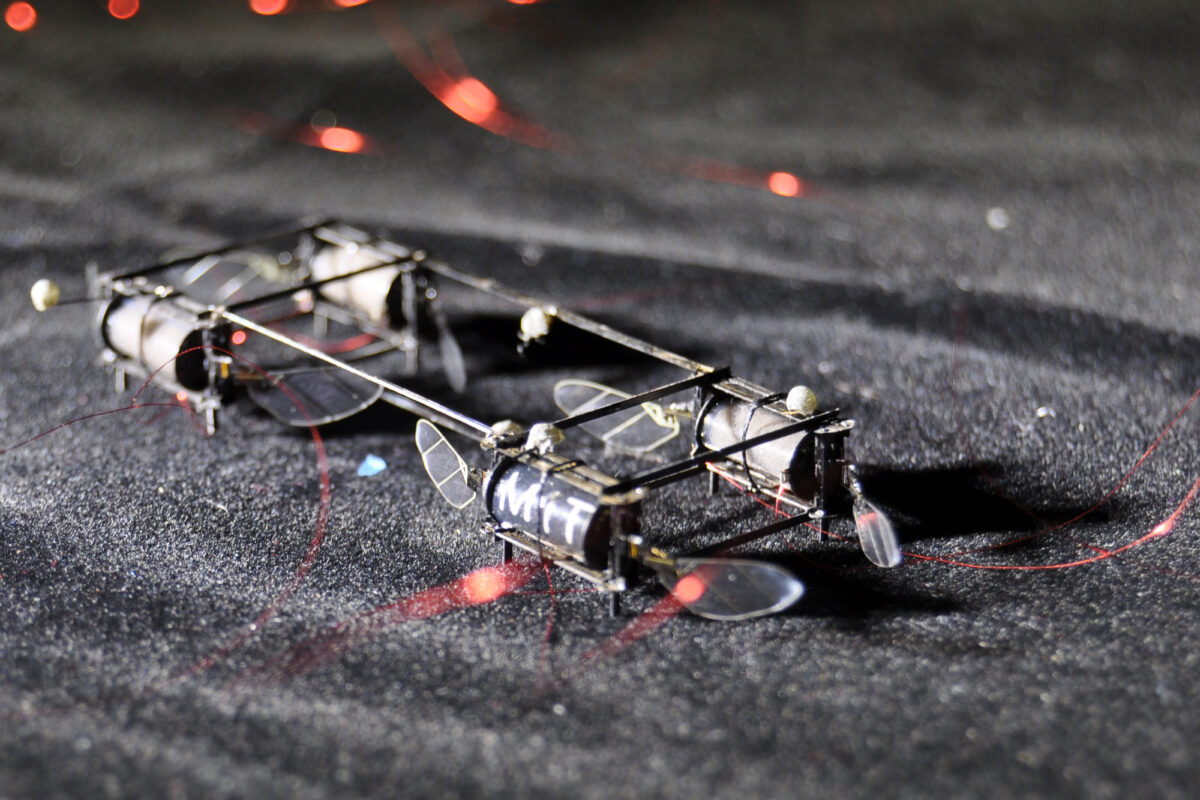

Engineers at the Massachusetts Institute of Technology have developed insect-sized robots that can light up and take flight. Think fireflies, but with what the robots’ creators call “electroluminescent soft artificial muscles for flying.” Their light, which offers a way for researchers to track the robots, could one day make the machines useful for search-and-rescue missions. In dangerous locations, the robots could signal for help by flashing their lights.
It’s normally difficult for such tiny robots to transmit information. “If you think of large-scale robots, they can communicate using a lot of different tools—Bluetooth, wireless, all those sorts of things. But for a tiny, power-constrained robot, we are forced to think about new modes of communication,” explained MIT professor Kevin Chen, who was the senior author of a recent report describing the machines, in a press release about the project.
When Chen describes these robots as “tiny,” he means they’re just a bit heavier than a paperclip. The same team of researchers designed their unique wings, made of a rubber-like material and electrodes, that flap when voltage is applied.
[Related: A tiny crabby robot gets its scuttling orders from lasers]
The researchers incorporated electroluminescent zinc sulfate particles to illuminate the artificial muscles when electrified. When the robots are operated at a high frequency, the zinc sulfate particles become particularly vibrant—and, because the particles increase the robots’ weight by only 2.5 percent, they won’t impair how the machines fly.
Once they had the basics down, the team experimented with different colors and even patterned lights. They also began running test flights, using the lights to track the robots through iPhone cameras and a specially designed computer program. Since the robots are so light, they cannot carry sensors, which previously limited researchers’ ability to test them outside of the lab. Adding the lights was a “major step” toward flying the robots outdoors, now that they can be more easily tracked.
In the future, researchers hope to improve both the robots and the motion tracking system to allow for enhanced real-time monitoring. They also are trying to reproduce an ability of living fireflies: The insects flash their lights on and off in-flight to communicate with each other.
You can see the robot bugs in action in the short video below:

